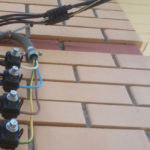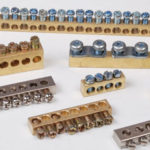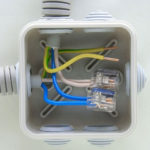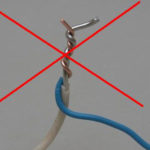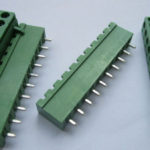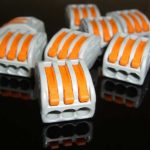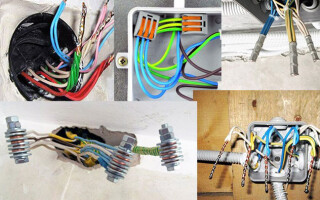No conductor of an electrical circuit can be infinite in length. Sooner or later it must connect to another wire, power source or consumer communication equipment. One way or another, there is a need for a forced connection between several conductors or hardware.
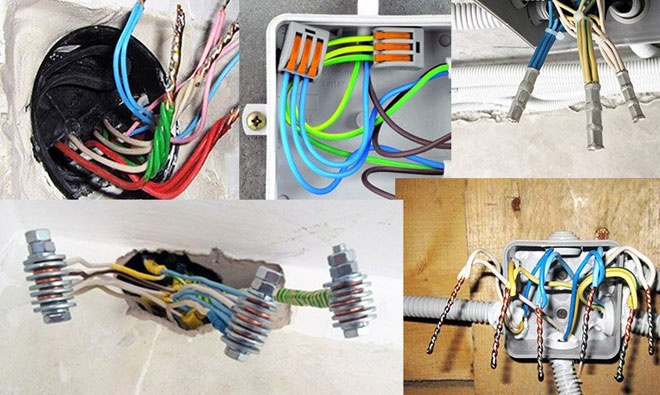
Wiring methods
There are several ways to connect wires
- stranding;
- soldering;
- crimping
- Using prefabricated fixtures.
Twisting and crimping is a cold connection method. Soldering is performed at high temperatures. Each method has positive and negative aspects, which will be discussed below, starting with the simplest connection - twisting.
Twisting
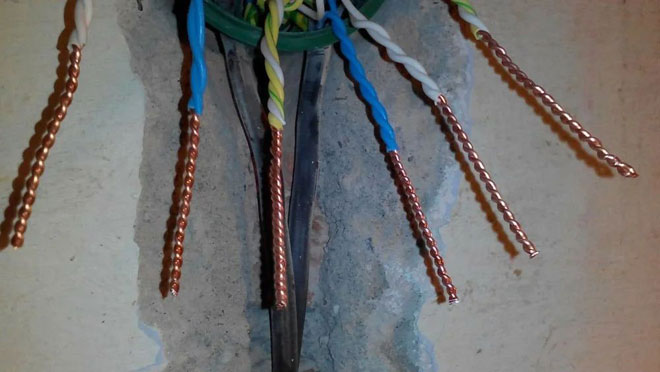
This method is not considered correct and no competent electrician recognizes it. The reason is the fragility of the connection, which can come loose when touched or vibration. This connection is especially unacceptable for conductors with a large cross-section or when three single-core or multi-core wires are in contact. This option can be used as a temporary connection for lighting lines.
Technologically the stranding is as follows. The conductors are stripped up to 3 cm of the oxide on the surface, and then twisted together. It is always necessary to apply insulation to the place of stranding.
Soldering and welding
The other method is soldering or welding, which are probably the most reliable but technically the most demanding processes. Soldering technology begins similarly to the previous method. The surface of the conductors is also stripped, and then they are either twisted or pressed tightly together. They are then heated and solder is applied, which can be either soft or hard.
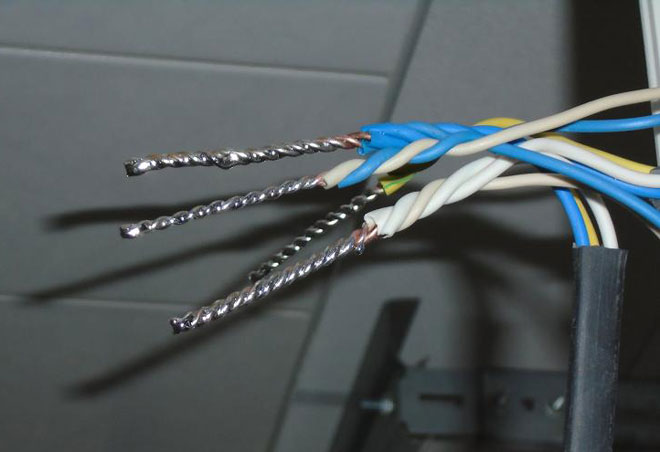
Soft solders are well known for tin-lead or silver, low-silver solder. Hard solders include copper-phosphorus, silver, brass, and zinc. Hard solder grades are more commonly used when welding copper wires in industrial facilities because they need to be heated to very high temperatures, unlike soft grades, which melt well when heated with an ordinary soldering iron. Fluxes or preliminary degreasing of the contacts with acid are used to improve the quality of soldering.
It is not uncommon to use a welding torch or gas torch to join large cross-section copper conductors, which is a professional welder's tool and cannot be used by an amateur.
Aluminum conductors are soldered using a different process equipment, using a different grade of solder than copper wires. Argon brazing is often used. Soldering aluminum conductors is quite a complicated process because the wires "float" under the influence of high temperatures. Solder joints of aluminum and copper wires are cleaned from the welding beads and must be insulated.
Welding of conductors is performed according to the scheme below.
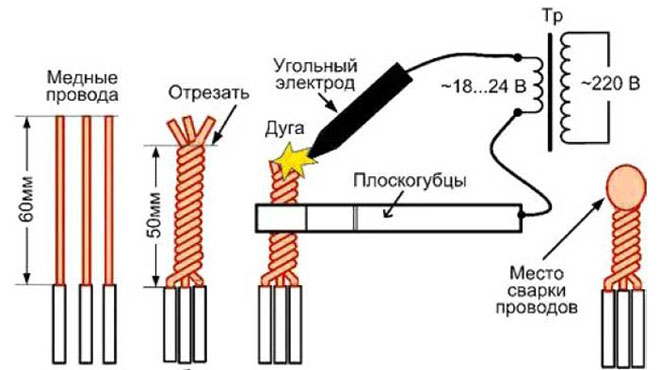
Connecting cable sleeves
When connecting stranded wires by crimping, crimp sleeves, which are made of a hollow tube, can be used. Before using them, the wires are stripped of the insulation to a size not smaller than half the size of the crimp sleeve. Then the sleeve is put on the conductors, and it is crimped on both sides with a special press. The bare, uninsulated area on the wire is insulated with the overlap of the wire and sleeve.
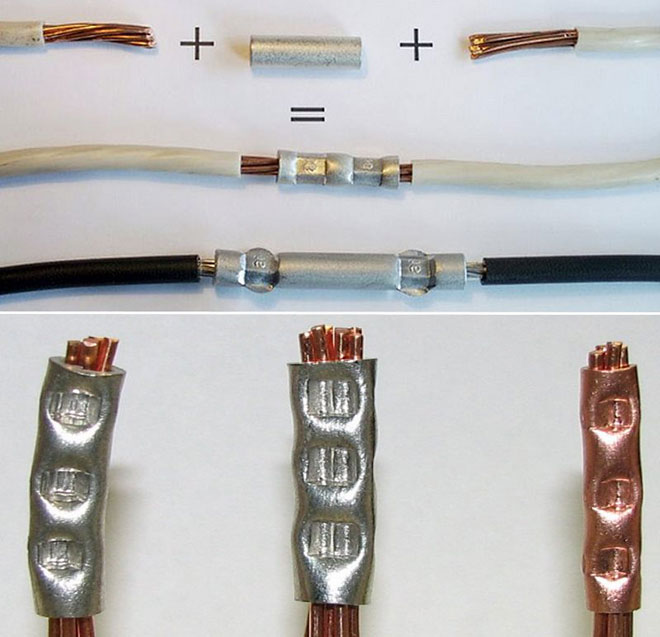
Connecting Insulating Clips
Joining insulating terminals or SIZ are a complete connection solution. The wires are stripped of their insulation, twisted, and the clamp is screwed on top. The contact is secured by a conical coil spring built into the clamp.
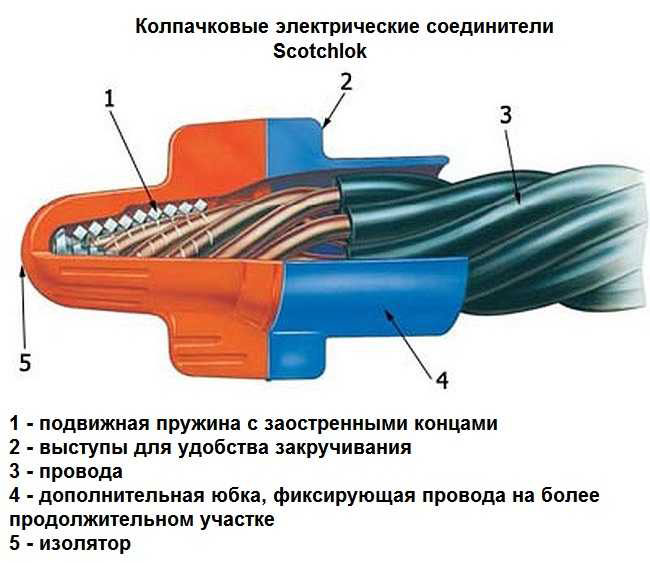
It is not necessary to insulate the connection area, because the terminal cap itself is an insulator. Externally, clamp caps may vary in shape for ease of installation. They also differ in size to match the total cross-section of the conductors.
Terminal blocks and terminal strips
Terminal blocks or terminal strips are used for assembling wiring diagrams and connecting the conductors in the required order terminalswhich perform several functions at the same time. They secure the conductors, allow circuit assembly, and protect the live parts from breakdown due to the insulation materials they contain.
Externally, they are a plastic case with sockets. The wires to be connected are fixed by screws or spring clips. Depending on the cross-section of the wire and the number of clips needed, they have different sizes.
Before installing a conductor to the screw terminal, it is stripped and looped on the screw, and then tighten it well, taking care not to squeeze the conductors. The quality of each contact is checked not only visually, but also by jerking the wire or testing with meters.
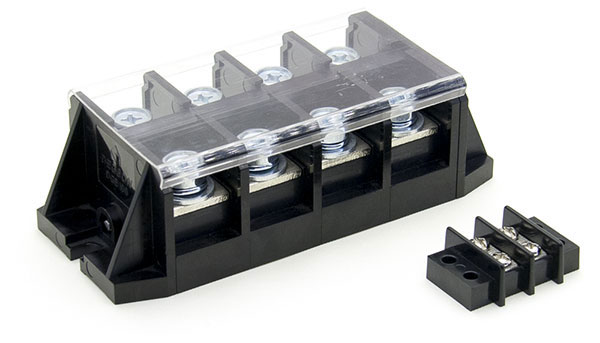
Spring clamps are used for monolithic or crimped HSPI lugs., stranded wire.
The disadvantage of this type of connection is the impossibility of complete insulation, and if the contact is poor, the possibility of oxidation. If the contacts work for a long time, their fixation on the socket should be checked.
Clamping conductors between a bolt and a nut
This type of connection is characteristic of conductors of different metal and is quite simple. First, strip the insulation from the wires and make a loop on the stripped wire. The loops are threaded onto the body of the bolt. To prevent the nuts from shifting, spring washers are used. This fixation looks quite cumbersome and requires space, which is not always sufficient when assembling a circuit.
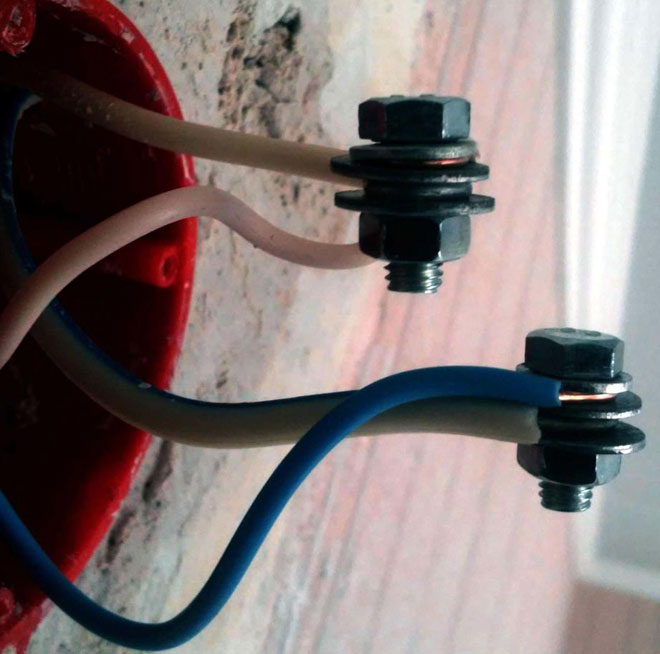
Secure connections are ensured by the use of a locksmith's tool. Check the reliability of fasteners by jerking the wire.
Piercing and tap clamps
Piercing and tap-connect terminals are commercially available. They are designed with two connectors. One for the live wire and one for the cable. CIP.
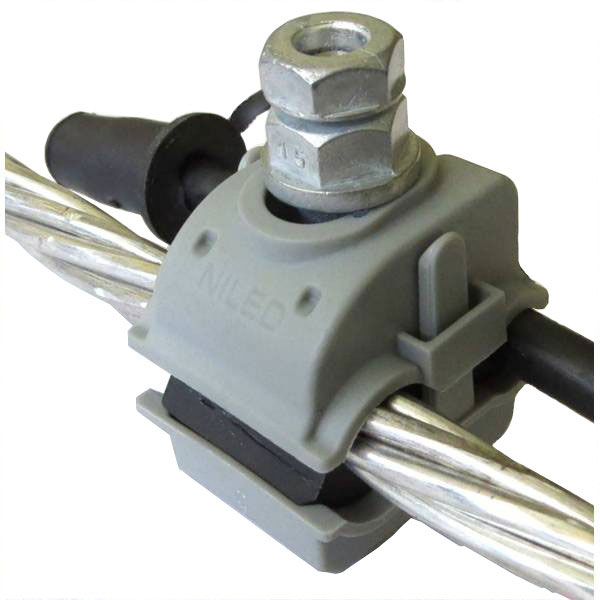
The clamp device has a bolt that is tightened with a wrench. The bolt actuates contacts that pierce the insulation of the conductive wire, thereby connecting the wires to each other. At the end LV-ABC wire the insulating cap, which is included with the clamps, is put on the end of the LV-ABC wire. The clamps allow you to work under voltage.
Connecting Cable Couplings
Junction cable coupler allows you to connect several pieces of cable without voltage with a minimum loss of power to the network. Their construction includes sleeves with bolted connections that allow the current-carrying parts of the cable ends to be fixed to each other and reliable insulating materials. Couplings vary in their design. The most popular version with heat shrink insulation.
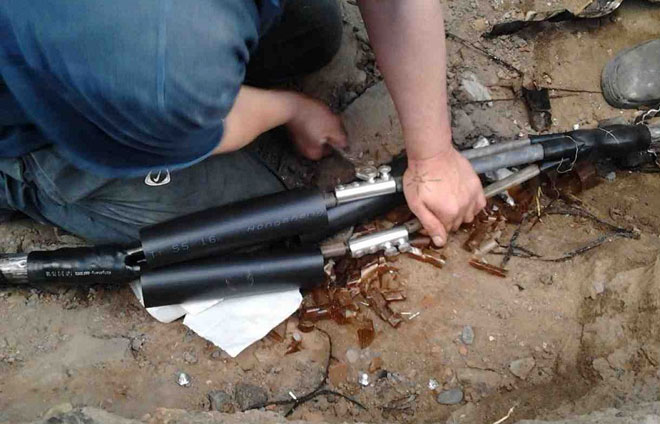
Choosing how to connect conductors
There are many ways to connect conductors. Choose a possible option should be based on the situation. So if you need a temporary connection, you can use just twisting or clamping the conductors between the bolt and the nut. Shaped or winding wires with a large cross-section are better fixed by welding or soldering.
Connecting cable sleeves or couplings are ideal for splicing cables. Connecting insulating clamps are good for fixing wires with small cross-sections and if you have the right size clamp. Terminal blocks are needed to assemble a circuit. Piercing and tapping terminals are used to connect an additional load to an existing network.
Stranded and Stranded Conductor Connection
This connection procedure begins with the cross sectional matching of solid and stranded conductors stranded wire to solid wire. A multicore wire must not be smaller than a solid wire, otherwise it will burn through at the junction. Fix them by soldering or welding, or by crimping when using cable sleeves.
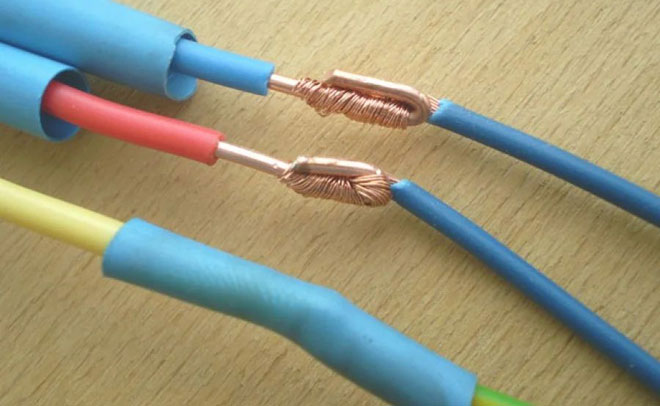
When soldering, the wires are stripped of their insulation, then the stranded wire is spliced onto the solid wire, and then the solder is performed. The soldering point is then protected by insulation. When crimping, the contact points are cleaned, a sleeve is put on and crimped with crimping pliers at several points.
Connection of wires with different cross sections
Connecting wires with different diameters is possible by calculating the current density at sites, if the density at sites is acceptable, they can be connected by soldering, twisting, terminals or bolted connections. Connection techniques do not differ from the process of connecting wires with the same cross-section and have been discussed above.
Joining wires with a larger cross-section
This method of connection is rather complicated with a large contact area. If the cross-section of rectangular wires is too large, fixation is only possible by welding and is often impossible at home due to the need to heat the conductors to a high temperature. After welding the conductors, it is necessary to test the resulting contact.
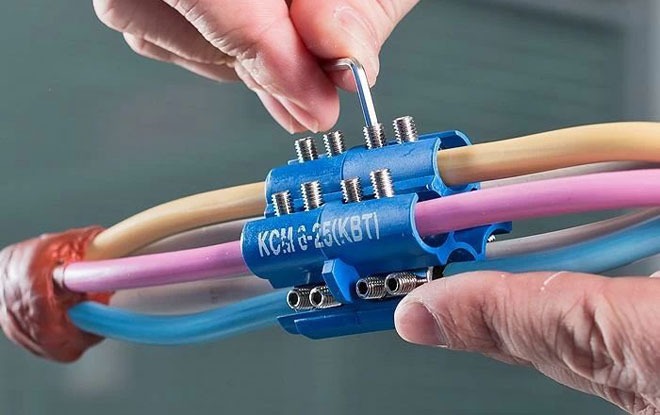
When connecting stranded wires or cables with a large cross-section you can use splicing socketalready mentioned above.
Connection of broken wires in the wall
Often in everyday life there are situations where there is a breakdown of electrical wiring in the wall. This often occurs during repair work. Initially, the electrical wiring must be de-energized and the plaster must be removed at the site of the repair work.
After that, the insulation is stripped from each end of the damaged wire, and the ends are covered with molten lead-tin solder using an ordinary soldering iron. Immediately the insulation for the soldering point is thought of. It is a good idea to use heat shrink tubing based on the size of the area to be repaired. The tube is put on one end of the conductors.
Next, select a wire with a cross-section at least as large as the broken wire, cut it off and solder first to one end of the wire, then to the other. At the same time, the length of the extended conductor should ensure the strength of the contacts. It should not be too small or too long. Finally, a tube is put on the section, which, when heated with a hair dryer, tightly embraces the soldered section.
Joining Copper and Aluminum
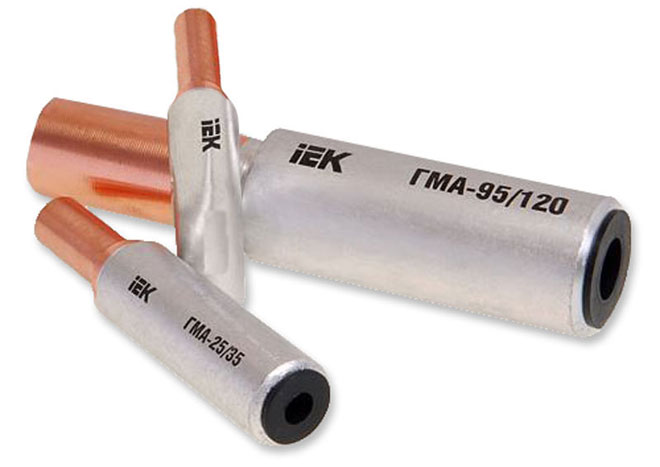
How to connect copper and aluminum wire is discussed in more detail in our article. Connecting dissimilar wires is possible by bolted connection discussed earlier. However, more often the fixation is made with copper-aluminum sleeves (GAM) for crimping. One side of the sleeve is made of aluminum, the other side of the sleeve is made of copper. The aluminum side of the sleeve is larger because aluminum has a lower current density than copper. The sleeve is put on the ends of wires with the same metal and crimped with a press.
Related articles:
